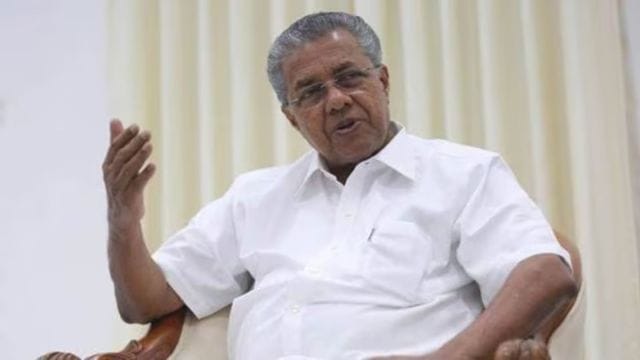
By K Ravi Raman
As Malayalees around the world prepare to celebrate Kerala Piravi on November 1, Kerala is set to become the first Indian state to proclaim itself free of extreme poverty. The Left Democratic Front — which is enjoying its second term in succession and aiming for a hat-trick early in 2026 — has facilitated this remarkable shift. It is powerful and irrefutable proof that communist ideology is not mere fantasy but an organising principle that has the power to transform the present, opening up the future to fresh possibilities.
Immediately after the Left came to power for the second time in 2021, the government made a decision to end extreme poverty, defined as severe deprivation in four core areas — nutritious food, safe housing, basic income, and health status. Despite the Centre’s biased policy, Kerala had already pushed the Multidimensional Poverty Index below 1. However, the government was keen to address the plight of those still left destitute.
It took the state a great deal of effort and systematic scrutiny to identify those in extreme poverty. First, it used critical deprivation indices developed through multiple trials to capture the nuanced realities of extreme poverty: Those who do not receive government benefits, destitute people without any sources of income or shelter, those suffering from health conditions and so on. In other words, these were people who were not captured by the otherwise extensive welfare functions of the state.
Second, a massive community participatory process was adopted for the identification of beneficiaries. The state confirmed them through systematic surveying, validation and cross-validation with hundreds of volunteers in partnership with Kudumbashree, the LIFE Mission, ASHA workers, NGOs, community activists, various government departments and civil society networks, all effectively supervised by the Local Self-Government (LSG) Department. Following community inputs, there was a field-level validation, super-checks, and then a final approval in grama/ward sabhas. In this process, 87,158 households were shortlisted from the originally identified 1,18,309 families. This was followed by the preparation of a priority list of 64,006 families with 1,03,099 people as beneficiaries.
Third, the LSG Department consulted with each family, and developed individual micro-plans to meet their basic needs. The micro-plans included short-term (the benefits to be provided immediately), medium-term (those that could be completed within three months to two years) and long-term components.
Fourth, the micro-plans were implemented, providing the beneficiaries with food, shelter, and medical care tailored to their individual needs; they have also been provided with insurance, MNREGS job cards, scholarships and study materials for children, and free travel passes; land is also being provided. In this process, 21,263 families received essential documents including ration cards and Aadhaar, 29,427 families were provided medical care, three meals a day for 20,648 were provided through community kitchens and often delivered at doorsteps, nearly 4,000 families were provided new houses with and without land, and 5,651 families received up to Rs 2 lakh each for renovation of their houses. Job opportunities were scaled up and 34,672 new job cards were provided. Of the 64,006 families, more than 96 per cent have been uplifted from extreme poverty and the rest are on the agenda. The scheme was designed in such a way that people originally identified as beneficiaries who travelled out of the state as part of their nomadic lives are taken care of once they are back home. A wide range of rights were realised in what I would call an exemplary exercise in “right making/state making”.
The credit for this goes first to Kerala’s Left legacy, from the first communist government in 1957 with its egalitarian ideals, and second, to the re-orientation of politics and economy by the “New Left”, which began the Agathi Rahitha Keralam (Destitute-Free Kerala) scheme in 2017. Another reason the state succeeded in this mission was the robust social welfare system that was already in existence and which has now been made more accessible to those who were destitute. The Karunya Arogya Suraksha Padhathi (KASP), which assures free treatment up to Rs 5 lakh per family per year, now covers 41.99 lakh poor and vulnerable families. Simultaneously, the Food and Civil Supplies Department and Supplyco ensure household food security with nutritious packages through an extensive public distribution network that never fails in its outreach, particularly to the vulnerable sections. Yet another reason is the “second turnaround” in Kerala’s economy (the first was in the 1980s, fuelled by the Gulf remittances), now fuelled by investments in social and economic infrastructure, supplemented by private investments and multiplier effects. This economic growth allows the state to pursue its social development goals and egalitarian ideals.
Chief Minister Pinarayi Vijayan’s leadership has successfully integrated all existing welfare provisions into the lives of the destitute, supplemented with fresh schemes; the budget for extreme poverty eradication alone crossed Rs 1,000 crore, all in the larger context of the dwindling share of central funds for states.
History is replete with examples of those who escaped poverty falling back into it whenever there was a crisis at either the individual or macro level. This has happened in India and other parts of the Global South; even advanced Western countries were not exceptions. Kerala’s government needs to be vigilant and ready to deal with such challenges, which will require not just monitoring but constant evaluation and learning. The fact that each beneficiary is geo-tagged makes it easier for the government to take follow-up actions.
In the spirit of John Rawls, one would argue that the society-state synergy is strongest when the weakest sections of society improve, and this improvement eventually benefits society at every level.
The writer is an expert member of the Kerala State Planning Board. Views are personal